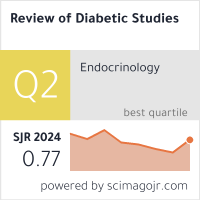Integrated Key Performance Indicators (Kpis) For Infection Control Compliance: From Medical Laboratories To Family Medicine Clinics
DOI:
https://doi.org/10.70082/th6eh349Abstract
Healthcare-associated infections (HAIs) remain a major threat to patient and healthcare worker safety across all levels of care, from specialized medical laboratories to community-based family medicine clinics. Structured infection prevention and control (IPC) programs, supported by robust monitoring and feedback, are central to reducing preventable infections and antimicrobial resistance (AMR) (World Health Organization [WHO], 2016; Habboush et al., 2024).Key performance indicators (KPIs) provide a quantitative means to assess IPC compliance, identify gaps, and drive continuous quality improvement. However, KPIs are often designed and monitored separately in different sectors of the same health system, leading to fragmented oversight and missed opportunities for integrated improvement.
This paper proposes an integrated framework of IPC KPIs that spans medical laboratories and family medicine clinics, aligned with WHO core components and Centers for Disease Control and Prevention (CDC) core practices (CDC, 2024; WHO, 2016).It categorizes indicators into input, process, outcome, and balancing KPIs, and details core cross-cutting metrics—such as hand hygiene, personal protective equipment (PPE) use, environmental cleaning, staff vaccination coverage, and training completion—alongside setting-specific measures for laboratories (e.g., biosafety cabinet use, sharps injuries, laboratory-acquired infections) and family medicine clinics (e.g., injection safety, instrument reprocessing, triage and respiratory hygiene).
Conceptual tables, figures, and graphs illustrate indicator definitions, calculation formulas, and integrated dashboard layouts for routine monitoring. The paper concludes with practical recommendations for implementation, including governance structures, data feedback loops, and use of run charts and control charts to guide Plan–Do–Study–Act (PDSA) cycles. By adopting integrated KPIs across laboratories and family medicine clinics, health systems can strengthen IPC programs, standardize expectations, and better protect patients, families, and healthcare workers in both hospital and community settings.
Downloads
Published
Issue
Section
License

This work is licensed under a Creative Commons Attribution-ShareAlike 4.0 International License.


